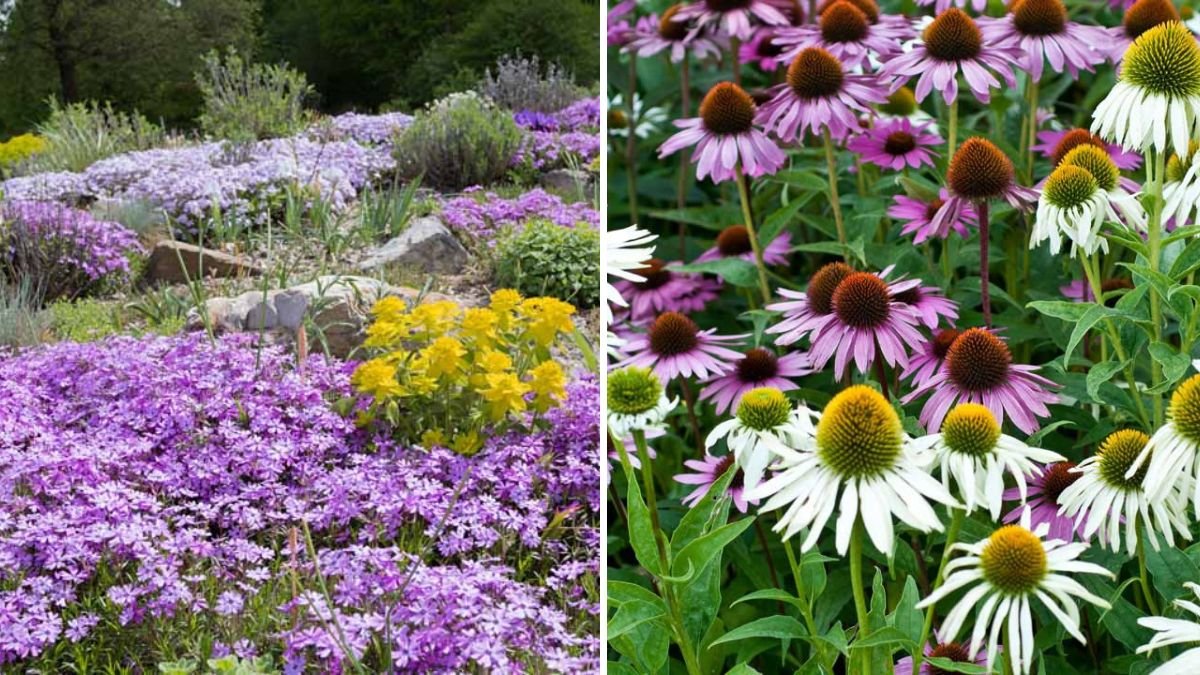Gardening in rocky soil can be a challenge for many plant enthusiasts. Rocky soil is often well-drained, nutrient-poor, and compacted, making it difficult for traditional garden plants to thrive. However, many beautiful, resilient flowers are perfectly suited to such conditions, offering vibrant blooms and low-maintenance growth. By selecting the right species and preparing your rocky garden thoughtfully, you can create a stunning, colorful landscape even in challenging terrain.
This guide highlights the best flowers to grow in rocky soil and provides detailed tips to ensure success.
Understanding Rocky Soil
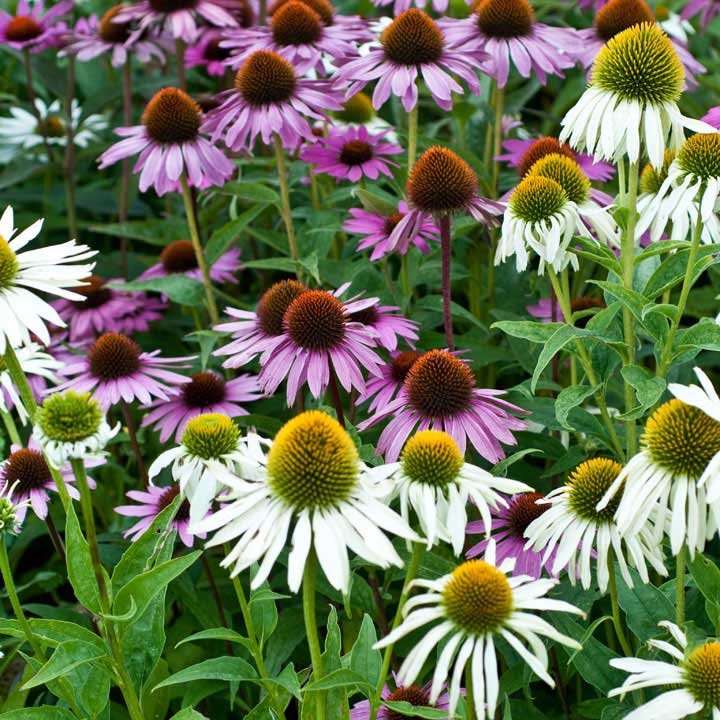
Before planting, it’s important to understand the characteristics of rocky soil:
- Drainage: Rocky soil drains quickly, which can limit moisture retention.
- Nutrient Levels: Often low in organic matter, requiring the addition of compost or fertilizers.
- Root Growth: Rocks can obstruct root expansion, making plants with deep or extensive roots more suitable.
- Temperature: Rocks can heat up in the sun, which may benefit heat-loving plants but stress sensitive species.
By understanding these traits, you can choose plants that are naturally adapted to rocky environments and take steps to enhance soil fertility.
1. Sedum (Stonecrop)
Why It’s Ideal for Rocky Soil
- Sedums are succulent perennials that thrive in dry, rocky conditions.
- They come in a variety of colors and shapes, including low-growing mats and upright stems.
- Their star-shaped flowers bloom in late spring and summer, attracting pollinators.
Care Tips
- Light: Full sun for best flowering and color.
- Watering: Extremely drought-tolerant; water sparingly.
- Soil: Prefers well-drained rocky or sandy soil.
- Maintenance: Minimal; trim dead stems after flowering for a tidy appearance.
Bonus: Sedums are perfect for rock gardens, containers, or edging, adding texture and color to rocky landscapes.
2. Lavender (Lavandula spp.)
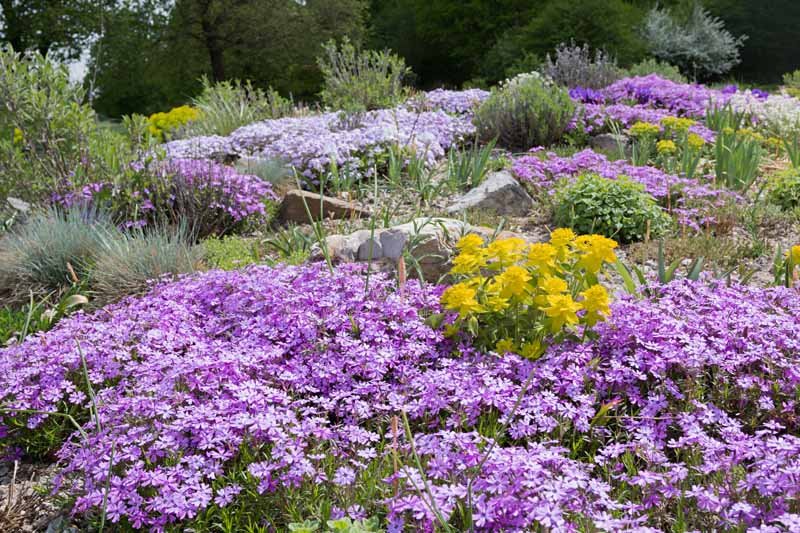
Why It’s Ideal for Rocky Soil
- Lavender thrives in well-draining, rocky soil with full sun exposure.
- Produces fragrant purple blooms that attract bees and butterflies.
- Its aromatic foliage and flowers add sensory appeal to gardens.
Care Tips
- Light: Full sun for at least 6 hours daily.
- Watering: Low; overwatering can cause root rot.
- Soil: Rocky or sandy soil enriched with compost for better growth.
- Pruning: Cut back after flowering to maintain shape and encourage new growth.
Bonus: Lavender is drought-resistant and low-maintenance, making it perfect for dry, rocky gardens.
3. Coneflower (Echinacea spp.)
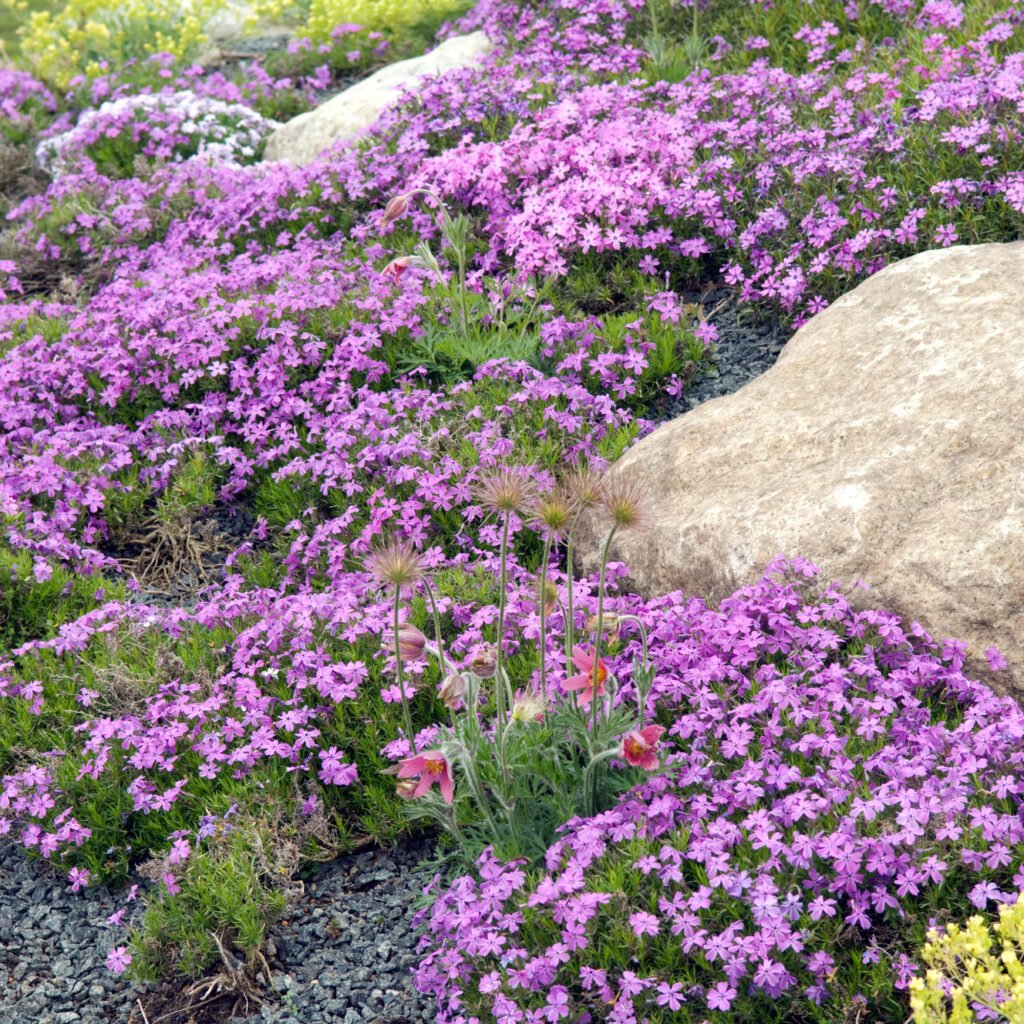
Why It’s Ideal for Rocky Soil
- Coneflowers are native perennials that tolerate poor, rocky soils.
- Their daisy-like flowers with prominent centers bloom from mid-summer to fall.
- They attract pollinators and beneficial insects, enhancing garden biodiversity.
Care Tips
- Light: Full sun to partial shade.
- Watering: Moderate; drought-tolerant once established.
- Soil: Well-draining soil; rocky conditions suit them well.
- Maintenance: Deadhead spent flowers to encourage continuous blooming.
Bonus: Coneflowers are long-lived and deer-resistant, making them practical for low-maintenance gardens.
4. Blanket Flower (Gaillardia spp.)
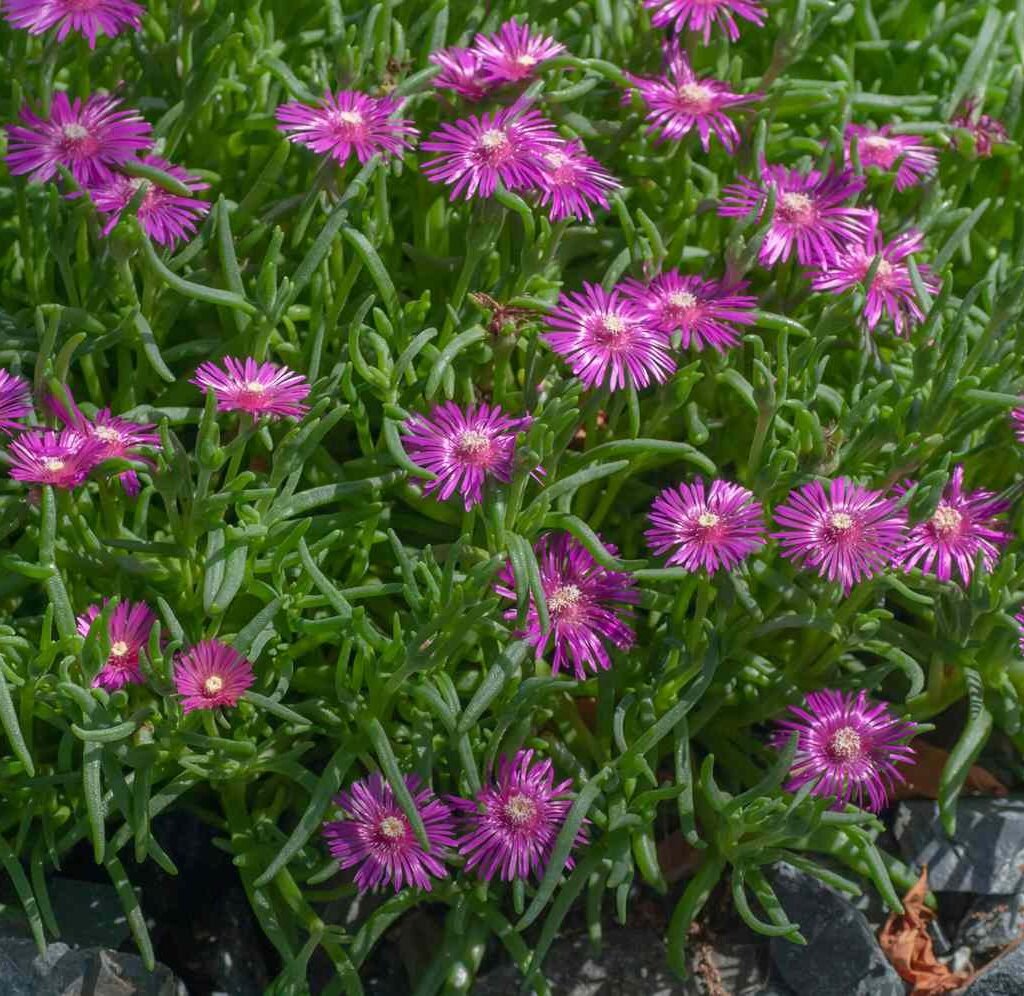
Why It’s Ideal for Rocky Soil
- Blanket flowers are heat-tolerant, sun-loving perennials that thrive in poor, rocky soils.
- Their vivid red, orange, and yellow blooms provide striking summer color.
- Flowers attract butterflies and hummingbirds, adding vibrancy to the landscape.
Care Tips
- Light: Full sun for maximum flowering.
- Watering: Low; prefers dry, well-draining soil.
- Soil: Rocky or sandy soils work well; minimal organic matter needed.
- Maintenance: Deadhead regularly to extend flowering.
Bonus: Blanket flowers are resilient and easy to propagate from seeds, making them perfect for rocky garden beginners.
5. Coreopsis (Coreopsis spp.)
Why It’s Ideal for Rocky Soil
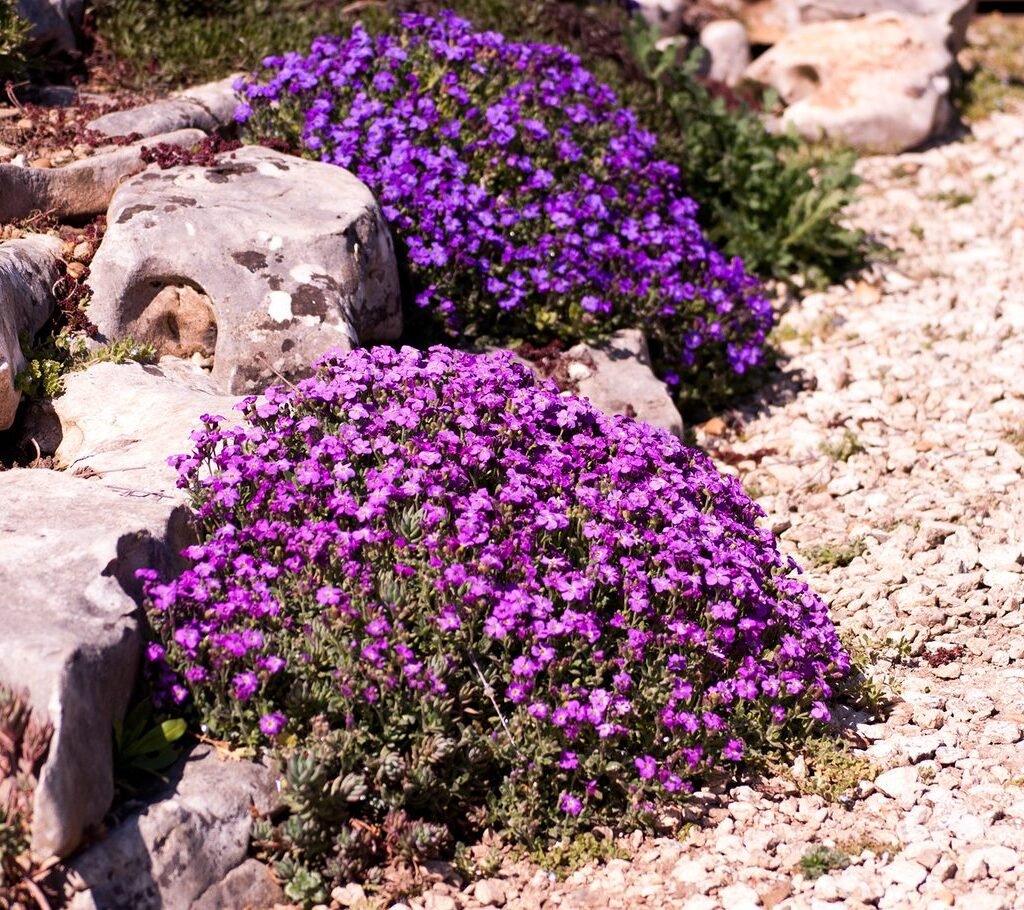
- Coreopsis, also known as tickseed, is a drought-tolerant perennial with bright yellow, red, or bi-colored flowers.
- Blooms continuously from early summer through fall.
- Adapted to poor, rocky soils, making it a reliable choice for challenging gardens.
Care Tips
- Light: Full sun for abundant blooms.
- Watering: Low; moderate watering during prolonged drought.
- Soil: Well-draining rocky or sandy soil.
- Maintenance: Deadhead to encourage more flowers; cut back in fall for tidy winter appearance.
Bonus: Coreopsis is low-maintenance, pest-resistant, and attracts pollinators, making it an excellent addition to rocky landscapes.
6. Yarrow (Achillea millefolium)
Why It’s Ideal for Rocky Soil
- Yarrow is a hardy perennial with feathery foliage and clusters of flowers in white, yellow, red, or pink.
- Thrives in poor, dry, rocky soil and withstands hot summers.
- Attracts beneficial insects like ladybugs and bees.
Care Tips
- Light: Full sun for best flowering.
- Watering: Low; extremely drought-tolerant.
- Soil: Rocky or sandy soil; minimal fertility required.
- Maintenance: Cut back after flowering to maintain shape and encourage rebloom.
Bonus: Yarrow’s medicinal properties and ease of growth make it a multifunctional garden choice.
7. Ice Plant (Delosperma spp.)
Why It’s Ideal for Rocky Soil
- Ice plants are succulent ground covers that flourish in well-draining, rocky soils.
- Produces vivid daisy-like flowers in shades of pink, purple, yellow, or white.
- Low-growing, spreading habit makes them perfect for rock gardens, slopes, and containers.
Care Tips
- Light: Full sun for best flowering.
- Watering: Minimal; drought-tolerant once established.
- Soil: Rocky or sandy soils with excellent drainage.
- Maintenance: Trim after flowering to maintain neat appearance.
Bonus: Ice plants are resilient and low-maintenance, ideal for gardeners dealing with rocky terrain and hot climates.
8. Gaura (Gaura lindheimeri)
Why It’s Ideal for Rocky Soil
- Gaura, or bee blossom, produces delicate, airy flowers in pink or white that bloom from spring through fall.
- Heat and drought-tolerant, it adapts well to rocky and sandy soils.
- Its long, slender stems create movement and texture in garden beds.
Care Tips
- Light: Full sun for abundant flowering.
- Watering: Low; drought-tolerant once established.
- Soil: Well-draining rocky or sandy soil.
- Maintenance: Cut back in late winter or early spring to encourage bushier growth.
Bonus: Gaura’s graceful, fluttering flowers make it an excellent companion plant for other rocky soil perennials.
Tips for Gardening in Rocky Soil
- Amend Soil: Mix compost or organic matter with soil to improve fertility without reducing drainage.
- Mulching: Apply a thin layer of mulch around plants to retain moisture and regulate temperature.
- Proper Watering: Water deeply but infrequently to encourage strong root systems.
- Choose Native Plants: Native species are often adapted to poor, rocky soils and require less maintenance.
- Plan Planting Layout: Use rocks creatively for drainage, microclimates, and decorative appeal.
By understanding your rocky soil’s characteristics and choosing adapted plants, you can maintain a thriving, colorful garden year-round.
Conclusion: Turn Rocky Challenges into Gardening Success
Rocky soil doesn’t have to limit your gardening ambitions. By selecting hardy, drought-tolerant, and visually striking flowers like Sedum, Lavender, Coneflower, Blanket Flower, Coreopsis, Yarrow, Ice Plant, and Gaura, you can create a vibrant and low-maintenance landscape.
With the right soil preparation, watering practices, and plant selection, rocky gardens can become eye-catching displays of color, texture, and resilience. These flowers not only survive but thrive in challenging conditions, providing continuous beauty and attracting pollinators that enhance your garden’s ecosystem.
Embracing these species allows gardeners to transform rocky, seemingly infertile areas into flourishing gardens, proving that even difficult soil can yield stunning floral success.
